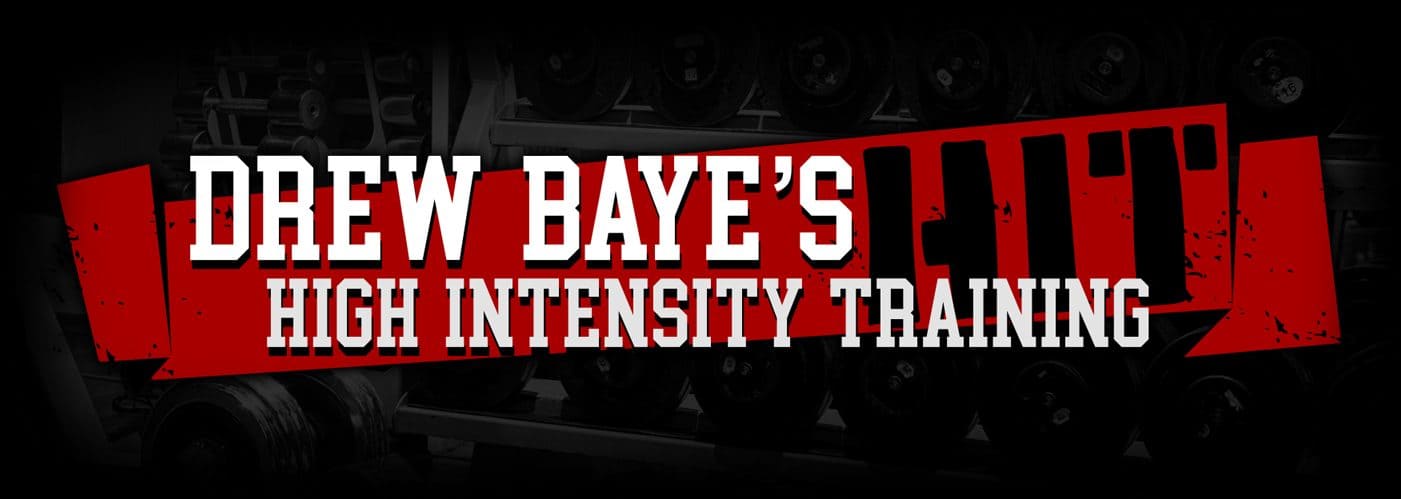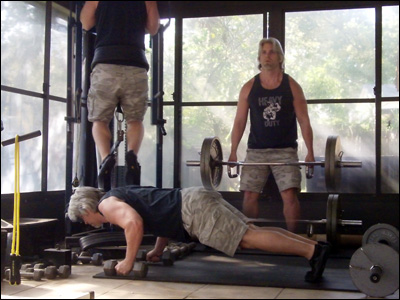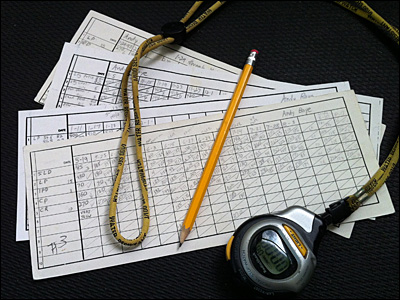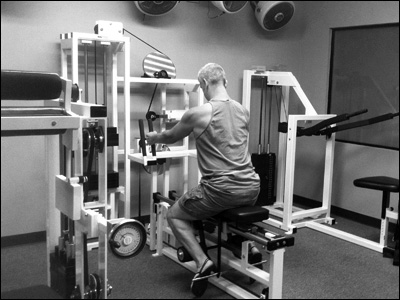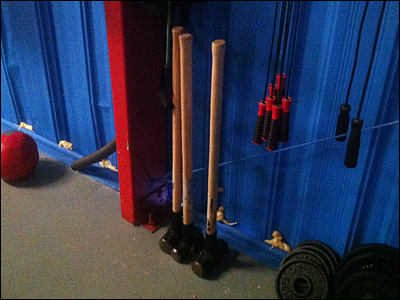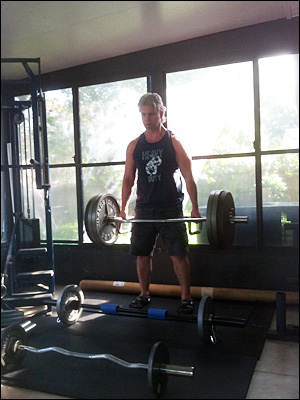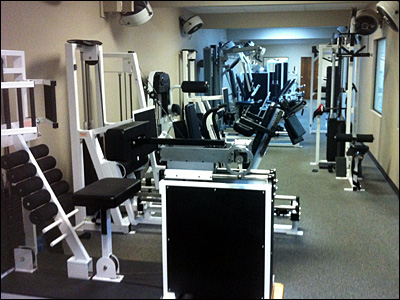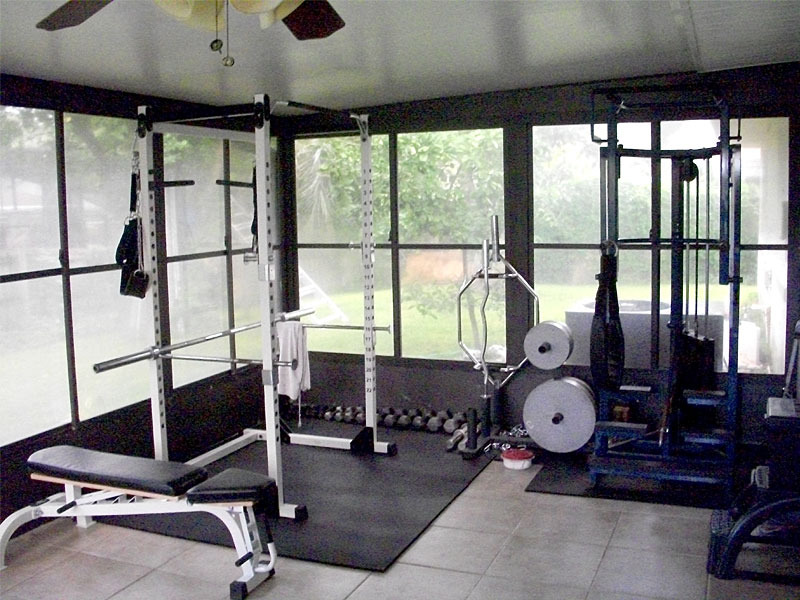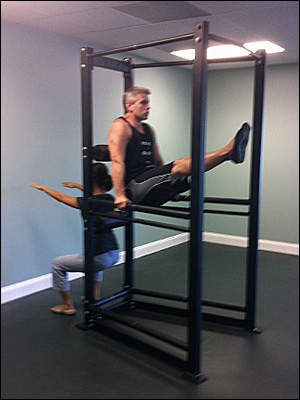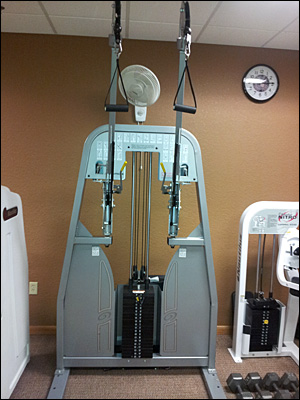There is a story in the news about a man and dog who rescued two young girls who fell through the ice into the Saskatchewan river in Edmonton. Adam Shaw was in a nearby park with his family and dog Rocky when he heard the girls scream. He and Rocky ran down to the edge of the river through deep snow, where he rescued the first girl who was clinging to the edge of the ice. They then ran down the edge of the river chasing the other girl who was quickly being pulled away by the current, who Rocky was able to jump in and rescue.
There are many stories about people performing heroic physical feats to save others:
Almost every year there are stories of people lifting cars to save people. In 2011 college football player Danous Estenor lifted a car off a man trapped underneath in Tampa and a group of people in Utah lifted a burning car off a man trapped under it after it struck his motorcycle.
The pro wrestler Chris Masters once uprooted a tree and threw it through the window of his mother’s house to save her from a fire started by a neighbor.
In 2009 Shelly Johnston, a 115 pound female college athlete, carried her 160 pound boyfriend down a hill it took them forty five minutes to climb after he fell about 120 feet from a waterfall and sustained severe head injuries.
In 2006 a woman fought off a polar bear long enough for hunters to arrive and save her son and two other children.
I love stories like these because they show people at their best; heroic, compassionate, and strong. However, I can’t help but wonder how many stories with similar beginnings ended tragically because an otherwise heroic person lacked the necessary strength or stamina. Whatever the number, it is far too high.
What if the Edmonton man didn’t have the stamina to run through the snow quickly enough to reach the first girl before she also slipped into the river? What if the various people who have saved people by lifting cars off of them lacked the strength?
Sometimes when I’m out I watch people and wonder if there were some disaster or emergency whether any of them would be able to help themselves, much less others. Sadly, the answer is usually no; most people are weak, slow, and frail compared to what they can and should be. While proper strength training will not turn everyone into Superman, most people would be amazed at the strength, stamina, and toughness their body is capable of if they are willing to put in the time and effort.
I think most people are good and will do what they can to help others in a bad situation, but what most people can do physically isn’t much. Wanting to help is not enough – you must also be able.
While most of you reading this already work out regularly, all of you know people who don’t. You never know if you or someone you know – a relative, friend, classmate, coworker, etc. – will find themselves in a situation where lives might depend on them.
Offer to take them to the gym with you and teach them how to work out. Buy or offer to help them pick out some home equipment and teach them how to use it if they don’t want to join a gym. In addition to the health, fitness and appearance benefits to them, every person you help start exercising is another person more capable of helping others and someday might even save a life.
Proper exercise is one of the most important things a person can do to improve their quality of life and human well-being in general. Help spread the word:
High Intensity Training Basics
Effective exercise is simple. You must work your major muscle groups hard enough to send a message to your body that it needs to increase their strength and improve the supporting factors (cardiovascular and metabolic conditioning, bone and connective tissue strength, flexibility, etc.) then provide your body proper nutrition and rest and enough time between workouts to do so.
While proper exercise is hard work, very little of it is required to be effective. One set of one exercise for each of the major muscle groups is all it takes. While individual response to exercise varies, most people will get good results training only once or twice weekly. In most cases more does not produce better results and in some cases less exercise works better.
Examples of basic, full-body workouts covering all the major muscle groups using different equipment:
Machines
- Leg Press
- Pull Down
- Chest Press
- Compound Row
- Overhead Press
- Trunk Extension
Free Weights (Barbells and/or Dumbbells)
- Squat
- Pullover
- Bench Press
- Bent Over Row
- Seated Press
- Stiff-Legged Deadlift
Bodyweight Only
- Squat
- Chin Up
- Push Up
- Inverted Row
- Shoulder Press Up or Handstand Push Up (static, half, or full depending on ability)
- Hip Raise
Optionally, additional exercises can be performed at the end of the workout to more directly work smaller muscle groups like the neck and calves, or the abdominal muscles (although those are worked in almost all other exercises).
A variety of repetition methods and cadences can be effective. For simplicity, safety, and efficiency I recommend taking four seconds to lift and lower the weight over a conservative range of motion (avoid extreme stretches).
- Move slowly and focus on intensely contracting the muscles you are working during each exercise.
- On compound pushing movements reverse direction immediately but smoothly at full extension without pausing to avoid unloading the target muscles. Reverse direction or “turnaround” about ten to fifteen degrees short of full extension on lower body pushing movements like squats and leg presses.
- On compound pulling and simple (rotary) movements pause and hold the weight at the top for a few seconds before reversing direction, unless there is little resistance in this position (for example, free weight pullovers and stiff-legged deadlifts). Starting with the third rep, “squeeze” the target muscles during this hold.
- As soon as you complete a repetition begin the next without stopping to rest or setting down the weight.
- Breathe continuously. Do not hold your breath.
- Do not have anything in your mouth during exercise, like gum.
- Keep your head and neck still, looking straight forward with your chin slightly down.
A variety of repetition ranges can be effective. I recommend a moderate range of six to ten repetitions on compound pushing movements and five to eight on pulling movements (taking into account the additional time spent holding at the end point) which allows for loads heavy enough to be challenging without compromising form or safety for most people. When you can perform the upper number in strict form (only count good repetitions) increase the weight slightly the next time you perform the exercise.
For bodyweight exercises attempt to increase the difficulty as you become stronger by deliberately contracting the antagonistic muscles during each exercise, for example contracting your upper back muscles, rear deltoids and biceps during push ups to make them harder for your chest, anterior deltoids, and triceps.
Move slowly during exercises, but quickly between them to maximize the cardiovascular and metabolic benefits of the workout. Attempt to gradually reduce the time you rest between exercises until you are able to move from one to the next in only a few seconds. When done with a high level of effort these workouts effectively improve cardiovascular and metabolic conditioning more safely and efficiently than traditional endurance activities.
Keep accurate records of your workouts and attempt to gradually increase the amount of weight you use on each exercise, while maintaining strict form (how you do each exercise is far more important than how many repetitions you perform or how much weight you use).
